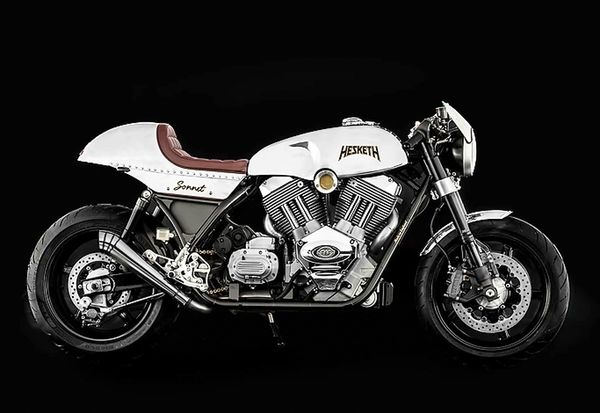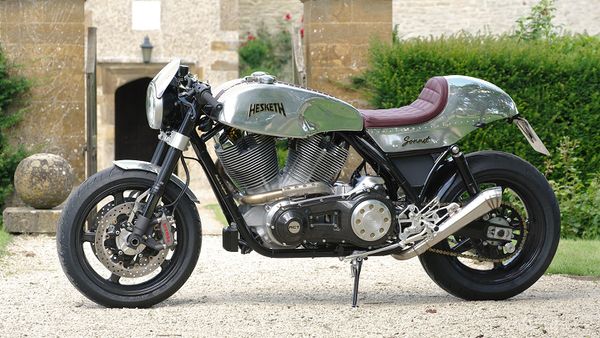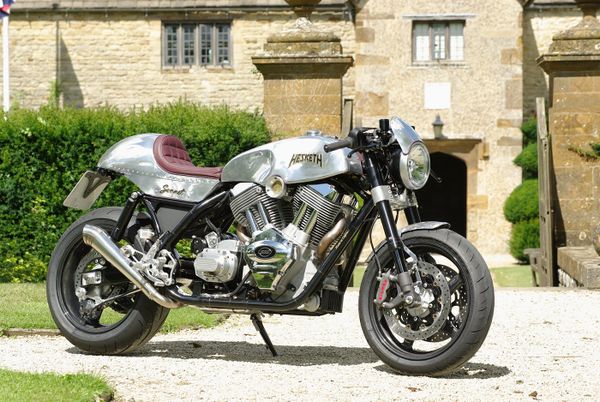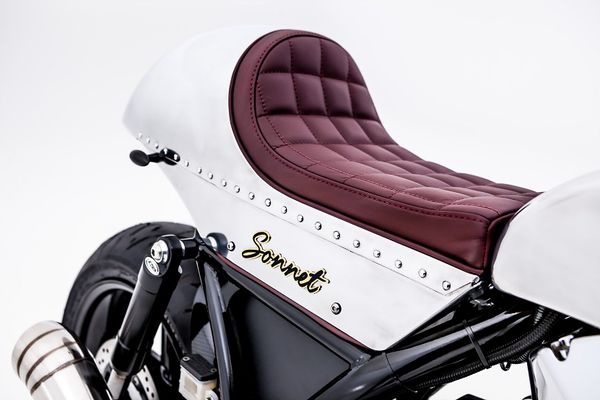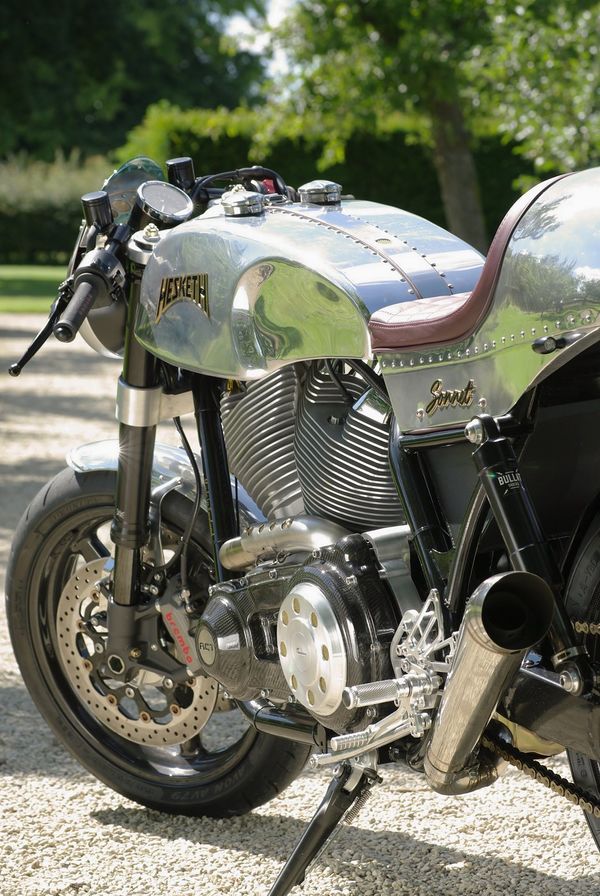Hesketh SONNET 2100
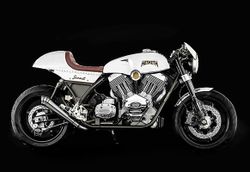 |
|
| Hesketh SONNET 2100 | |
| Manufacturer | |
|---|---|
| Production | 2017 |
| Class | Sport Bike |
| Engine | V-twin, triple cam OHV, air cooled |
| Bore / Stroke | 111.8mm x 111.8mm |
| Compression ratio | 9.75:1 |
| Horsepower | 146.98 HP (109.6 KW) @ 6000RPM |
| Torque | 154.9 ft/lbs (210.0 Nm) @ 3000RPM |
| Fuel System | Electronic fuel injection |
| Transmission | Gear box: 6-Speed Final Drive: Chain |
| Suspension | Front: KTR-2 50 mm USD fully Rear: Twin bullit nitrogen charged shocks |
| Brakes | Front: Double discs 320 mm Rear: Single disc 250 mm |
| Front Tire | 120/70/ZR17 |
| Rear Tire | 190/55/ZR17 |
| Wheelbase | 60.98 inches (1549 mm) |
| Seat Height | 29.88 inches (759 mm) |
| Weight | 245.0 kg (wet) |
| Manuals | Service Manual |
The Hesketh SONNET 2100 was a V-twin, triple cam OHV, air cooled Sport Bike motorcycle produced by Hesketh in 2017. Max torque was 154.9 ft/lbs (210.0 Nm) @ 3000 RPM. Claimed horsepower was 146.98 HP (109.6 KW) @ 6000 RPM.
Engine[edit | edit source]
A 111.8mm bore x 111.8mm stroke result in a displacement of just 2163.0 cubic centimeters.
Drive[edit | edit source]
The bike has a 6-Speed transmission. Power was moderated via the Wet multi plate.
Chassis[edit | edit source]
It came with a 120/70/ZR17 front tire and a 190/55/ZR17 rear tire. Stopping was achieved via Double discs 320 mm in the front and a Single disc 250 mm in the rear. The front suspension was a KTR-2 50 mm USD fully while the rear was equipped with a Twin bullit nitrogen charged shocks. The wheelbase was 60.98 inches (1549 mm) long.
2017 Hesketh SONNET 2100[edit | edit source]
The 2017 Sonnet’s powerplant is the first ever standalone engine design from leading American powertrain producer S&S, whose products have underpinned the US custom and chopper industry for the past half-century. The Hesketh’s air cooled, triple-cam, pushrod OHV V-twin dry-sump X-Wedge derives its name from its crossflow wedge-shaped combustion chambers, designed so that the intake and exhaust ports are in alignment with the plane of the valve stems.
